The Hoatzin: An In-Depth Look at a Unique Bird
The hoatzin (Opisthocomus hoazin) is a truly remarkable bird residing in the heart of South America’s lush wetlands. Known by many names, including the “stinkbird” due to its unusual digestive system, this species fascinates scientists and bird enthusiasts alike. Often compared to a pheasant in size, the hoatzin stands out with its striking appearance and equally compelling biological adaptations. This exploration delves into the intriguing world of the hoatzin, uncovering its unique characteristics, ecological significance, and the challenges it faces.
Habitat and Distribution
The hoatzin, a bird inextricably linked to water, is confined to the northern and central regions of South America, with its distribution largely mirroring the expansive Amazon and Orinoco river basins. Within this geographically diverse realm, the hoatzin exhibits a marked preference for freshwater habitats, characterized by slow-moving or stagnant water and an abundance of vegetation.
Swamps, with their dense, tangled foliage and submerged root systems, constitute a quintessential hoatzin habitat. These wetlands offer an ideal combination of shelter, nesting sites, and a readily available food source. Similarly, marshes, characterized by their herbaceous vegetation and shallow water levels, provide suitable foraging grounds for these specialized herbivores.
The hoatzin’s affinity for water extends beyond swamps and marshes. It frequents the banks of rivers, particularly those adorned with gallery forests – corridors of trees lining the water’s edge. These riparian zones offer a rich tapestry of plant life, providing ample sustenance for the hoatzin’s herbivorous diet.
Lakes and streams, while less frequently inhabited than swamps or riverine environments, also fall within the hoatzin’s habitat range. These water bodies, often fringed with emergent vegetation, offer opportunities for foraging and roosting. Notably, the hoatzin’s preference for undisturbed, pristine habitats underscores its vulnerability to habitat loss and degradation, a growing concern throughout its range.
While the hoatzin demonstrates adaptability within its wetland domain, its distribution remains constrained by the availability of suitable habitat. The intricate interplay between water levels, vegetation composition, and human activity ultimately shapes the hoatzin’s presence and abundance across its South American range.
Physical Characteristics
The hoatzin (Opisthocomus hoazin) is a visually striking bird, easily recognizable by its unique blend of physical features. Roughly the size of a pheasant, measuring approximately 65 cm (26 inches) in length, the hoatzin possesses an unconventional avian silhouette. Its body appears relatively large and stout, contrasting with its small head perched atop a long, slender neck.
The hoatzin’s plumage is a tapestry of earthy hues, providing effective camouflage within its verdant habitat. The upperparts are predominantly dark, sooty-brown, subtly embellished with buff edges on the wing coverts and faint buff streaks throughout. In contrast, the underparts exhibit a richer palette, characterized by a warm, rufous-chestnut coloration.
Perhaps the most distinguishing feature of the hoatzin is its head. Atop its small head sits a prominent, spiky crest of reddish-brown feathers, lending the bird a perpetually startled or inquisitive expression. This crest, often held erect, adds to the hoatzin’s unusual profile. Adding to its already striking appearance, the hoatzin possesses unfeathered, bright blue facial skin surrounding a pair of piercing maroon eyes.
The hoatzin’s wings are broad, rounded, and relatively short in proportion to its body, reflecting its limited flying ability. Its tail, noticeably long and sooty-brown, culminates in a broad band of white or buff at the tip, providing a stark contrast against the darker plumage. Adding to its mystique, juvenile hoatzins possess a remarkable feature rarely found in the avian world: two large claws on each wing. These claws, reminiscent of prehistoric bird ancestors, assist the young in navigating their arboreal habitat.
Unique Digestive System
The hoatzin stands apart in the avian world for its extraordinary digestive system, a physiological marvel that has captivated scientists for centuries. Unlike any other known bird, the hoatzin possesses a digestive process more akin to that of ruminant mammals, such as cows, than its feathered kin. This unique adaptation underpins its ability to thrive on a diet primarily composed of leaves, a food source typically low in readily accessible nutrients and challenging for most birds to digest efficiently.
Central to the hoatzin’s digestive prowess is its greatly enlarged crop, a muscular pouch situated at the base of its esophagus. While many bird species possess crops for storing food, the hoatzin’s crop has evolved into a specialized fermentation chamber. Ingested leaves are initially stored and partially broken down within this chamber, but the truly remarkable process involves a symbiotic relationship with a diverse community of bacteria. These microbial allies produce enzymes capable of breaking down cellulose, the tough structural component of plant cell walls that is indigestible to most vertebrates.
This process of foregut fermentation, occurring before food reaches the stomach, allows the hoatzin to extract valuable nutrients from leaves that would otherwise remain inaccessible. The byproduct of this bacterial fermentation is the release of volatile compounds, contributing to the hoatzin’s rather pungent odor, which has earned it the less-than-flattering moniker of “stinkbird.” However, this distinctive smell serves as a deterrent to potential predators, offering the hoatzin a degree of protection.
This unique digestive strategy has profound implications for the hoatzin’s ecological role. It enables the bird to exploit a food resource often underutilized by other species, effectively minimizing competition. Moreover, the hoatzin’s ability to convert otherwise indigestible plant matter into a usable energy source highlights its significance within the intricate food webs of its neotropical habitat.
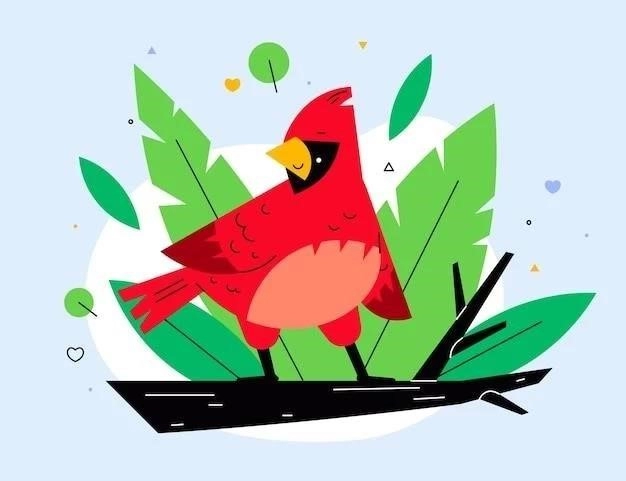
Diet and Feeding Habits
The hoatzin stands out in the avian world for its predominantly herbivorous diet, a dietary preference uncommon among bird species. This unique feeding ecology is intrinsically linked to its specialized digestive system, enabling it to thrive on a diet largely composed of leaves, a food source typically avoided by most of its avian counterparts.
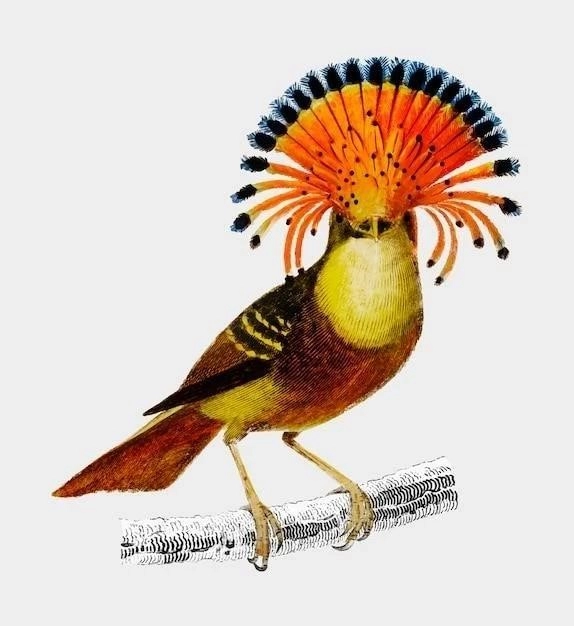
The hoatzin’s diet consists primarily of young, tender leaves, meticulously selected from a diverse array of plant species found within its wetland habitat. While the exact composition of its diet varies depending on location and seasonal availability, studies have documented the hoatzin consuming leaves from over fifty different plant species, underscoring its adaptability as a forager.
While leaves constitute the cornerstone of the hoatzin’s diet, it also incorporates a smaller proportion of flowers and fruits into its meals. These supplementary food sources, often consumed opportunistically, provide additional nutrients and energy. The hoatzin’s feeding behavior involves methodical foraging within its arboreal domain. It uses its strong legs and feet to navigate branches and vines, often clinging awkwardly as it reaches for preferred leaves.
The hoatzin’s unusual digestive system, characterized by its enlarged, fermentation-capable crop, plays a pivotal role in its ability to extract nutrients from its fibrous diet. This specialized digestive process allows the hoatzin to exploit a food resource largely underutilized by other bird species, effectively minimizing competition and allowing it to carve out a unique ecological niche.
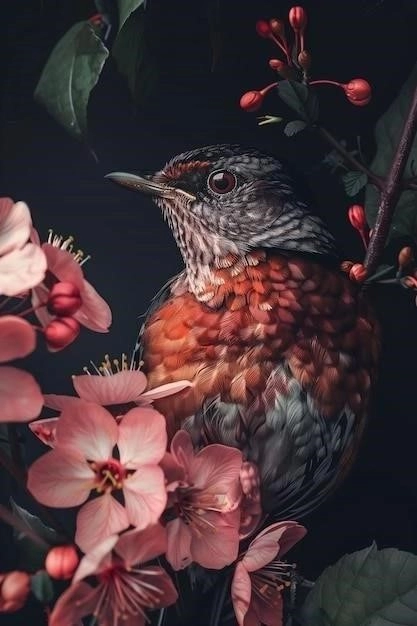
Lifespan and Reproduction
The hoatzin, a denizen of South American wetlands, exhibits a life cycle intricately tied to the rhythms of its watery realm. While its lifespan and reproductive strategies share similarities with other tropical bird species, the hoatzin distinguishes itself through unique adaptations that ensure its survival in these dynamic environments.
In the wild, the average lifespan of a hoatzin is estimated to be between 14 and 15 years. This relatively long lifespan, particularly for a bird of its size, is likely attributed to a combination of factors, including its specialized diet, relatively low predation pressure, and adaptations to its unique habitat. Captive hoatzins, residing in controlled environments with ample food and protection from predators, have been known to live considerably longer, with some individuals reaching ages of 29 to 30 years. This disparity in lifespan underscores the impact of environmental factors on the species’ longevity.
Hoatzins are seasonal breeders, synchronizing their reproductive activities with the onset of the rainy season. This strategic timing ensures an abundant food supply for both adult birds and their developing offspring. As the rains transform the landscape, prompting new growth and an influx of insects, hoatzins engage in courtship displays, forming monogamous pairs that collaborate in nest building and chick rearing.
Nests, constructed from a platform of loosely woven twigs and branches, are strategically positioned a few meters above water within dense vegetation. This placement offers a degree of protection from predators while simultaneously providing a safe haven for the vulnerable young. Females typically lay a clutch of 2-3 eggs, which are incubated by both parents for a period of approximately 32 days.
Behavior and Social Structure
The hoatzin, a bird renowned for its peculiar appearance and unique digestive system, also exhibits intriguing social behaviors and a complex social structure that has fascinated researchers for decades. These social dynamics, often observed within their preferred wetland habitats, provide insights into the intricate lives of these fascinating birds.
Hoatzins are primarily diurnal, meaning they are most active during daylight hours. During this time, they engage in a variety of activities, including foraging, preening, and interacting with other members of their social group. While not known for their aerial prowess, hoatzins are capable of short, clumsy flights, often limited to moving between nearby trees or escaping perceived threats. They are far more agile climbers, utilizing their strong legs and feet, coupled with the unique claws on the wings of juveniles, to navigate their arboreal domain.
Within their wetland habitats, hoatzins typically form small, cohesive social groups known as “flocks” or “bands.” These groups, often comprising several family units, consist of both adult and juvenile birds. The social hierarchy within these flocks remains poorly understood, but observations suggest a degree of cooperation among members, particularly during foraging and chick rearing.
Communication within hoatzin flocks is a lively affair, characterized by a repertoire of vocalizations, including grunts, croaks, hissing sounds, and even wing-clapping displays. These vocalizations, often employed to signal alarm, maintain contact between individuals, or defend their territory, underscore the complexity of their social interactions.
Vocalizations and Communication
The hoatzin, a bird renowned for its unusual traits, possesses a surprisingly diverse vocal repertoire, a symphony of sounds that plays a crucial role in its social interactions and communication within the lush, often noisy, wetlands it calls home. These vocalizations, ranging from guttural grunts to raucous hissing, provide a fascinating glimpse into the complex communication strategies employed by these unique birds.
One of the most frequently heard hoatzin vocalizations is a low-pitched, guttural grunt, often uttered repeatedly in a rhythmic series. This particular call is thought to serve multiple functions, including maintaining contact between individuals within a flock, particularly when foraging within dense vegetation where visual contact may be limited. Additionally, these grunts may play a role in establishing and maintaining social hierarchies within the flock.
When alarmed or threatened, hoatzins unleash a harsh, rasping hiss, often accompanied by a display of wing-spreading and head-bobbing. This aggressive vocalization serves as a deterrent to potential predators and intruders, conveying a clear message of defense and warning. The intensity of the hiss can vary depending on the perceived threat level, with louder, more prolonged hisses signaling a higher level of alarm.
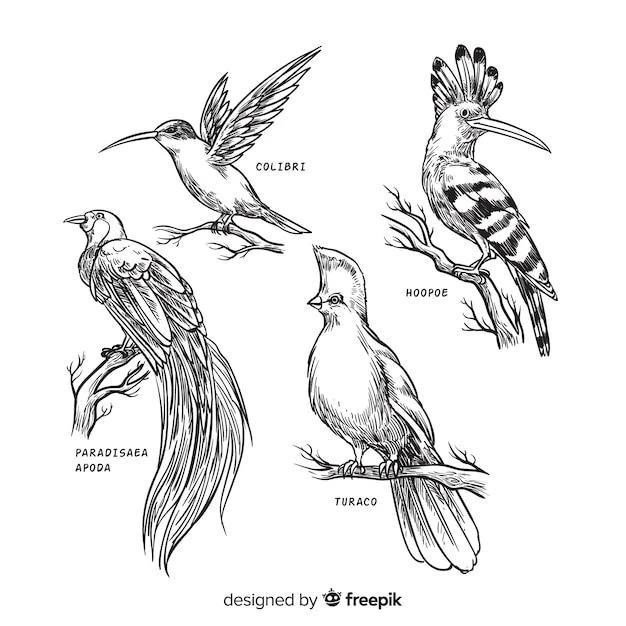
In addition to their vocalizations, hoatzins employ a range of visual displays in their communication repertoire. During courtship, males engage in elaborate displays, puffing out their chest feathers, raising their crests, and engaging in synchronized movements to attract females. These visual cues, often combined with vocalizations, play a crucial role in mate attraction and pair bonding.
Role in the Ecosystem
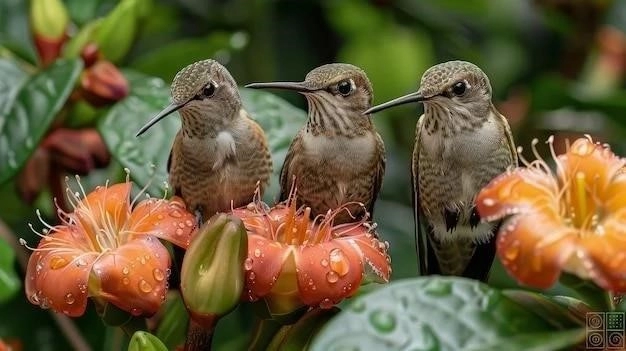
The hoatzin, an enigmatic inhabitant of South American wetlands, plays a crucial yet often overlooked role in the delicate balance of its neotropical ecosystem. Its unique adaptations, particularly its unusual digestive system and specialized diet, position the hoatzin as a keystone species, influencing the structure and function of its environment in ways that extend far beyond its size and abundance.
As a highly specialized herbivore, the hoatzin has carved out a niche for itself by consuming large quantities of leaves, a food source typically avoided by other bird species. Its remarkable ability to digest cellulose, thanks to its unique foregut fermentation system, allows it to extract nutrients from this abundant yet often challenging food source. This dietary specialization reduces competition with other herbivores, fostering biodiversity within its habitat.
Furthermore, the hoatzin’s feeding behavior, which involves selectively consuming leaves and dispersing seeds through its droppings, plays a vital role in plant regeneration and forest dynamics. By consuming leaves from a diverse range of plant species, the hoatzin contributes to the dispersal of seeds across its territory, aiding in the colonization of new areas and the maintenance of plant diversity.
The hoatzin’s nesting habits also contribute to the ecological richness of its wetland habitat. Their nests, often built over water in close proximity to other hoatzin pairs, create a microhabitat that attracts a variety of insects and other invertebrates. These invertebrates, in turn, serve as a food source for fish and other aquatic creatures, highlighting the interconnectedness of food webs within the hoatzin’s domain.
Conservation Status
The hoatzin, a unique and ecologically important species inhabiting the wetlands of South America, currently holds a conservation status of “Least Concern” according to the International Union for Conservation of Nature (IUCN). This designation signifies that the hoatzin is not currently facing an immediate risk of extinction. However, this status should not be misinterpreted as an indication that the species is devoid of conservation concerns. A confluence of factors, both past and present, warrant ongoing monitoring and conservation efforts to ensure the long-term survival of this remarkable bird.
Historically, the hoatzin’s remote habitat and its unpalatable flesh, attributed to its unusual diet, afforded it a degree of protection from human exploitation. However, the ever-increasing pressure on Amazonian ecosystems, driven by deforestation, agricultural expansion, and mining activities, poses a significant threat to the hoatzin’s long-term survival. As these activities encroach upon pristine wetland habitats, the hoatzin faces the loss and fragmentation of its preferred foraging and nesting sites.
The hoatzin’s specialized diet and its dependence on undisturbed wetland environments make it particularly vulnerable to habitat degradation. The conversion of wetlands for agricultural purposes, coupled with the pollution of waterways from agricultural runoff and mining waste, can have devastating impacts on hoatzin populations. These activities not only reduce the availability of suitable habitat but also degrade water quality, potentially impacting the availability of food sources and increasing the risk of disease.
Threats to Survival
The hoatzin, a remarkable bird endemic to South America’s wetlands, faces an array of threats that cast a shadow over its long-term survival. While currently classified as a species of “Least Concern” by the International Union for Conservation of Nature (IUCN), the hoatzin’s dependence on undisturbed wetland habitats and its specialized lifestyle render it highly susceptible to a range of anthropogenic pressures.
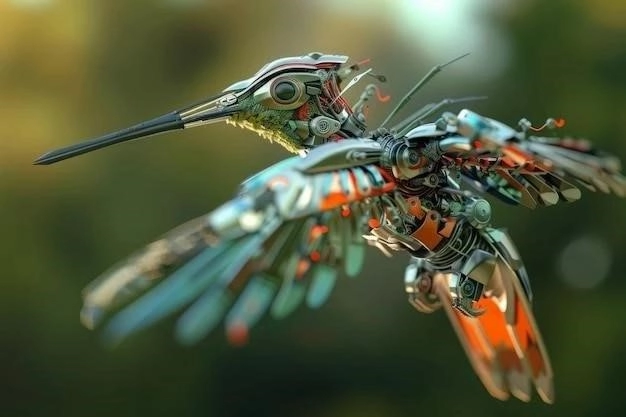
Habitat loss stands as the most pressing threat to hoatzin populations. The relentless conversion of wetlands for agricultural expansion, particularly large-scale cattle ranching and soybean cultivation, has decimated vast swaths of the Amazon rainforest, fragmenting the hoatzin’s once contiguous habitat. This loss of habitat not only reduces the overall area available for foraging and nesting but also isolates populations, potentially leading to genetic bottlenecks and increased vulnerability to disease.
Beyond habitat destruction, the degradation of water quality within remaining wetlands poses a significant threat. Runoff from agricultural fields, laden with pesticides, herbicides, and fertilizers, contaminates waterways, potentially impacting the abundance and diversity of the plant species upon which the hoatzin relies for sustenance. Similarly, mining activities, particularly gold mining, release toxic heavy metals into rivers and streams, further degrading water quality and posing a direct threat to the health of hoatzins and their prey.
While not historically targeted for hunting due to their unpalatable flesh, hoatzins are increasingly susceptible to human disturbance, particularly in areas experiencing rapid habitat conversion. The encroachment of human settlements and associated activities, such as fishing and logging, can disrupt breeding cycles, displace individuals from preferred foraging areas, and increase stress levels, ultimately impacting reproductive success and survival rates.
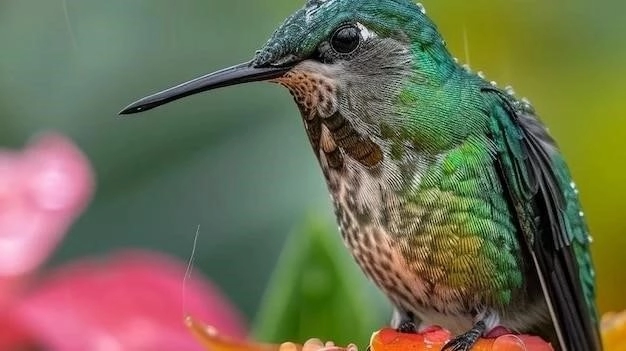
Relationship with Humans
The hoatzin, a distinctive inhabitant of South American wetlands, has long held a unique place in the cultural and ecological landscape of the Amazon basin. Its relationship with humans, while historically characterized by limited interaction due to its remote habitat and unpalatable flesh, has evolved in recent decades as anthropogenic pressures increasingly encroach upon its wetland domain.
Indigenous communities residing within the hoatzin’s range have traditionally held a certain reverence for the bird, viewing it as a symbol of the wetlands’ ecological integrity. Its unique features, particularly its pungent odor and peculiar digestive system, have earned it a prominent place in local folklore and mythology. In some indigenous cultures, the hoatzin’s call is believed to herald rain, underscoring its perceived connection to the natural rhythms of the rainforest.
However, as human populations expand and development activities push deeper into the Amazon, the hoatzin’s relationship with humans has become increasingly characterized by conflict. The conversion of wetlands for agriculture, cattle ranching, and infrastructure projects has not only fragmented and degraded the hoatzin’s habitat but has also brought it into closer proximity to human settlements, increasing the potential for negative interactions.
In some regions, hoatzins are occasionally targeted for subsistence hunting, their eggs collected for food, and their feathers used for traditional crafts. While this level of exploitation is generally considered sustainable, localized pressure on populations can occur, particularly in areas where alternative protein sources are scarce or during times of hardship.
Interesting Facts and Adaptations
The hoatzin, an avian anomaly inhabiting the flooded forests and riparian corridors of South America, stands apart from its feathered kin, boasting a suite of curious adaptations and fascinating characteristics that have captivated scientists and nature enthusiasts for centuries. These peculiarities, ranging from its prehistoric-like claws to its unusual digestive process, contribute to the hoatzin’s mystique and underscore its unique evolutionary trajectory.
One of the hoatzin’s most striking features, particularly in its juvenile stage, is the presence of two functional claws on each wing. These claws, reminiscent of their reptilian ancestors, are not merely vestigial remnants but serve a crucial role in the young hoatzin’s life. Lacking the agility of their adult counterparts, young hoatzins rely on these claws to navigate their arboreal world, deftly clambering through branches and foliage. These claws are typically shed as the birds mature and their flight abilities improve, highlighting a remarkable example of ontogenetic adaptation.
Beyond its archaic claws, the hoatzin’s digestive system sets it apart in the avian world. Unlike most birds, which possess relatively simple digestive tracts, the hoatzin has evolved a complex, multi-chambered system analogous to that found in ruminant mammals, such as cows. This unique adaptation allows the hoatzin to break down cellulose, the tough structural component of plant cell walls, via a process of foregut fermentation.










